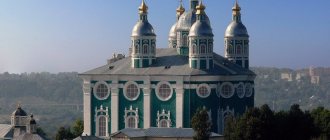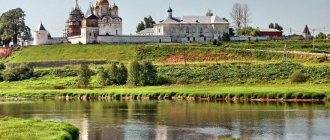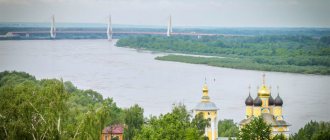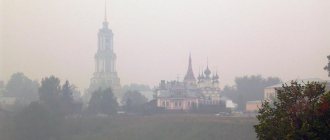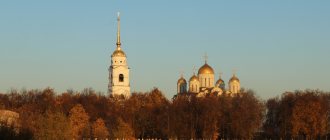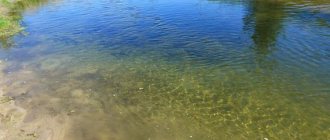Good afternoon friends! The other day I returned from a trip along the Golden Ring of Russia. There were a lot of impressions, but not everything went smoothly.
Why didn't it work out as planned? Which cities did you visit and what did you have to give up? In this article I publish our route around the Golden Ring by car. At the end, I will show you the costs for all 9 days on a turnkey basis. Perhaps someone will want to repeat this path.
Here you will find a short version of the trip. For more details about each section of the route with all the hotels, catering, and features of traveling by car, read the following materials.
Information about the Golden Ring for tourists
The “Golden Ring” route itself appeared with the light hand of journalist Yuri Bychkov, who in 1967 drove a car through ancient Russian cities located around Moscow and published a series of travel notes under that name.
And already in 1971, tourist buses with professional guides moved along the route. Why exactly the “Golden Ring”? According to Bychkov himself, after completing his short journey, he decided not to return along the already traveled path, but to drive through Yaroslavl and Rostov, making the route circular. And the ring became golden during the process of writing a series of articles, when the art critic was walking around Moscow near the bell tower of Ivan the Great. The weather was cloudy, but the dome of the bell tower showed gold through the veil that covered the sky above, reminiscent of five sunny days of travel. It was this allegory that gave birth to the image that is well known to everyone today - the Golden Ring, a real cultural and historical treasury surrounding the capital.
What cities and attractions did you manage to see?
The table shows the attractions that we were able to visit during 9 days of traveling by car along the Golden Ring. We spent more time on some of them, some we just looked at, but we looked at everything listed below. The table turned out to be a little clumsy, I can’t figure out how to make them beautiful. But it seems to me that information in any form would be less convenient for study.
| Cities and towns | Attractions |
| Sergiev Posad | Holy Trinity Sergius Lavra (Krasnogorskaya Square) |
| Pereslavl Zalessky | Nikolsky Convent (Gagarina, 43) Holy Trinity Danilov Monastery (Lugovaya, 7) Feodorovsky Convent (Moskovskaya, 85) Historical and Architectural Museum Reserve Assumption Goritsky Monastery (Museiny Lane, 4, entrance 50 rubles, expositions on the territory separately from 50 to 100 rubles) Alexander Nevsky Museum Pereslavl Zalessky Red Square Ensemble: Transfiguration Cathedral (80 rubles) Vladimir Cathedral Church of Metropolitan Peter Church of Alexander Nevsky Iron Museum (140 rubles) Museum tricks and ingenuity (150 rubles cost with excursion) Museum of antique things (all the latest museums and Red Square are within walking distance on Sovetskaya St. 11-14) Radio Museum (Podgornaya, 40) Museum of Dummies (120 rubles. ) and the Museum of the History of Money (located across the road opposite each other is the village of Veskogo, Peter the Great St., no. 17) Nikitsky Monastery (on the left on the road to the lake, Zapadnaya, no. 20) National Park "Pleshcheyevo Lake" - Blue Stone ( Kriushkino village, there are signs) |
| Rostov Veliky | Rostov Kremlin (Sovetsky lane) Spaso-Yakovlevsky Monastery (Rostov, Engelsa, no. 44) Rostov Trinity-Sergius Varnitsky Monastery (Varnitsy settlement, no street) Epiphany Avraamievsky Convent (Zhelyabovskaya, no. 32) Factory "Rostov Finift" » (Borisoglebskoye sh., no. 3, 125 rub. ex. + 90 rub. museum) |
| Karabikha | Museum-Estate “Karabikha” Nekrasova N. A. (Yaroslavl region, village of Karabikha, Shkolnaya, 2a) |
| Kostroma | Kostroma Historical, Architectural and Art Museum. A whole complex of buildings and shopping arcades. (everything is located on Susaninskaya Square, the address of the museum is Prospect Mira, 7, the cost of tickets depends on the exhibition and photography, in total I left 450 rubles there). Epiphany-Anastasia Monastery (Simanovsky, no. 26) Museum of Flax and Birch Bark (Tereshkovoy, no. 38, 150 rubles) Holy Trinity Ipatiev Monastery (Prosveshcheniya St., no. 1) Village of 17th-century Architecture (located immediately behind the Ipatievsky Monastery , Prosveshcheniya st., 1B) |
| Susanino | Museum of the Feat of Ivan Susanin (Temple of the Resurrection, Sovetskaya St., 33A, 80 rubles) Chapel of Susanin (village of Domnino) Stone to Susanin in the swamps (village of Domnino) |
| Shchelykovo | Museum-Reserve A.N. Ostrovsky "Schelykovo": 1. House of A.N. Ostrovsky 2. Literary and Theater Museum 3. Ethnographic Museum “Sobolev House” 4. St. Nicholas Church |
| Red on the Volga | Only the crossing and city streets |
| Nerekhta | St. Nicholas Church, which acts as a museum, is open from 9.00, although the sign on the facade is from 10.00 (entrance 80 rubles, filming 80 rubles, belfry 80 rubles). The ensemble of the Assumption Church is located three kilometers from Nerekhta in the village of Teterinskoye |
| Plyos | Levitan Museum (4/2 Lunacharskogo St., 60 rubles) Plessy Museum-Reserve (6 Lunacharskogo St.) Church of the Assumption of the Blessed Virgin Mary under restoration (Mount Svoboda St.) |
| Ivanovo | Museum of Calico (Baturina St., 11/42, 100 rubles) Museum of Industry and Art (opposite the Museum of Calico - Baturina St., 6/40, 100 rubles) St. Vvedensky Monastery (Bazisnaya, 23 ) Holy Dormition Monastery (Smirnova, 76) |
| Palekh | Museum of Palekh Art (50 Bakanova St., 200 rubles) The complex of ancient houses in which the exhibitions are located is scattered throughout the city. |
| Suzdal | Museum of Wooden Architecture (Pushkarskaya, 27A) Spaso-Evfimiev Monastery (Lenin St., 400 rubles single) Suzdal Kremlin (Kremlyovskaya St., 20, entrance 50 rubles, visit to all exhibitions 350 rubles) Architectural ensemble in Kideksha: 1. Church of the Holy Princes Boris and Gleb (1152), 2. Church of the Holy Archdeacon Stephen (1780), 3. Bell tower (XVIII century), 4. Holy gate with fence (XVIII - XX centuries) |
| Vladimir | Museum complex "Chambers" (B Moskovskaya, no. 58) Demetrius Cathedral (B Moskovskaya, no. 54) Holy Assumption Cathedral (B Moskovskaya, no. 54) Golden Gate (B Moskovskaya, no. 1A) Museum in the Water Tower (Kozlov Val str., no. 58) 14, 100 rubles) Patriarchal Gardens (Kozlov Val, 14, 150 rubles) Vladimir Prison (Bolshaya Nizhegorodskaya St., 67) |
| Gus-Khrustalny | The Crystal Museum is located in St. George's Cathedral (Kalinina, 2a, 200 rubles) |
| Moore | Spaso-Preobrazhensky Monastery (Lakina, no. 1) Holy Trinity Convent (Krestyanina Square, no. 3a) Holy Annunciation Monastery (Krasnoarmeyskaya, no. 17a) Resurrection Monastery (Plekhanova, no. 27a) |
Rostov Veliky
The domes of Rostov the Great are famous throughout the country!
And we continue on our way. Next up is Rostov the Great
.
The arched passages of the Kremlin
“Ivan Vasilyevich Changes Profession”
was filmed on its territory .
The hero Alyosha Popovich lived
in the Sarskoe settlement Museum of the Frog Princess
, and in
the Rostov Enamel Museum
you can see masterpieces of local masters.
Borisoglebsky
,
Spaso-Yakovlevsky
and
Epiphany monasteries
are of interest not only to pilgrims: every guest of Rostov should walk along the ancient walls, absorbing centuries-old power with their eyes and soul.
And after a walk along the shores of Lake Nero,
a beastly appetite develops: the city knows about this feature, so most restaurants and cafes offer eternally hungry tourists a rich selection of traditional Russian cuisine.
What to try:
Rostov fish soup from pike perch, teloe, mushroom dishes, fruit drink, mead.
What to bring:
Rostov enamel, black-polished ceramics, gingerbread.
Alexandrovsk
The first day.
Early Sunday morning we left Aprelevka. Heading towards Yaroslavskoye Highway. But bad luck - we forgot paper maps (it’s still unusual without them) and other little things, so it was decided to make a short technical stop at a Moscow apartment. This didn’t delay us too much, and at 8:00 we started off fully equipped.
Yaroslavka on the way out of Moscow was pretty dug up, and even on Sunday morning we weren’t driving fast. The construction is encouraging - in a couple of years it will probably be good. Polya’s sleep-deprived daughter quietly mutters that “again they’re taking us somewhere, and our route is unclear...”. I had to take a break from contemplating the surroundings and tell them that the route was still clear, and the first point was the city of Alexandrov, the temporary capital of Tsar Ivan the Terrible.
I heard about the Terrible Field, saw Repin’s picture, watched a film about Ivan Vasilyevich, so I stopped appearing and got ready to listen. In the stories, the rest of the journey flew by quickly, and at 9:50 we parked near the Alexander Kremlin.
The museum (and therefore the ticket office) of Alexandrovskaya Sloboda opened at 10:00, and we decided to go to the Church of the Holy Trinity, where the Sunday service was just ending.
At the beginning of 11 o'clock we set off on a journey through the museum complex of Aleksandrovskaya Sloboda, which consists of several diverse museums on the territory of the Kremlin.
And the first of them is the dungeons of Ivan the Terrible. The best way to explore a dungeon when traveling with a child is to look for a treasure, and in this case, the famous library of Ivan the Terrible, which, according to one legend, is hidden in the settlement. Inspired by our search, we look into each place. They didn’t find the library, but they cheered up and became interested in exploring.
The next museum of everyday life. We quickly scan the exhibition and invite the child to find griffins, a lyre and two cylinders, after which we leisurely explore the museum. From time to time Polya reports on another find - a kind of quest. Next, the peasant hut - very relevant - Polya and I recently discussed the structure of a peasant hut: a red corner, a children's corner, a woman's kut, and so on. In conclusion, there are the king’s chambers with a dungeon, a refectory, a torture chamber and other necessary attributes of the life of a ruler.
Vladimir
In Vladimir, you can study Russian history while walking through the streets of the city.
The capital of the Old Russian state is a treasure for historians, pilgrims and inquisitive travelers. Vladimir-Suzdal Museum-Reserve
- a huge complex that includes architectural monuments and collections of two cities at once.
The elegant Golden Gate
is the main attraction of Vladimir, where you can see with your own eyes the architectural features of traditional Russian architecture, make a wish and see ancient weapons in the museum at the top of the building.
To explore all the white stone churches, you will have to stay in the city for a couple of days. A short program includes a visit to the Assumption Cathedral
with frescoes by Andrei Rublev,
Dmitrievsky Cathedral
with amazing carvings, and
the Nativity Monastery
with ancient buildings.
The Kozlov Val
tower offers a marvelous view of Vladimir, tourists will find the best souvenirs in the stalls of the shopping arcades, the author of “Moscow-Petushki” Venedikt Erofeev studied at the
Herzen Institute
the Vladimir Central
, famous thanks to the song of Mikhail Krug, attracts tourists with a thematic museum.
The Historical Museum
has an impressive collection of archaeological finds, paintings and icons; in
the Chambers
, visitors will be able to view several exhibitions: costumes, toys, fine and applied arts; in
the House of the Stoletov Brothers
they will tell interesting stories about the life of a merchant family.
What to try:
live beer, spicy mead, dumplings, pancakes.
What to bring:
souvenirs depicting the sights of Vladimir, boxes, crystal, lacquer miniatures, bast shoes, patchwork.
Kostroma
Half an hour later we were there. We spent the whole day in Kostroma 2 years ago, so we decide to limit ourselves to lunch and a short walk around the city center.
Over the past two years, Kostroma has changed for the better, it has become more well-groomed or something, there are a lot of people and children on the streets
At 15:30 we leave towards Yaroslavl-Rybinsk, discussing where it is better to spend the night in Rybinsk. But our plans are not destined to come true - on the ring road of Yaroslavl we get stuck in traffic jams. When we finally break out of the tenacious embrace of Yaroslavl, we understand that it no longer makes sense for us to go to Rybinsk. We decide to spend the night near Tutaev, and at the same time once again visit the wonderful Tutaevsky Church of the Resurrection.
I think this is one of the most beautiful temples I have ever visited.
The ferry to the Romanovskaya side of Tutaev leaves at 18:30.
10 minutes, and we are on the Romanovskaya side, starting for the night two years ago near the village of Novoe - a pine forest on the banks of the Volga and sandy beaches. At the beginning of eight we are there. We swim in the Volga, have dinner and admire the barges and white steamers sailing past.
Eh, roads
Before you go on a trip, I advise you to look at the pages of the most famous cities of the Golden Ring: “100 roads” look by city. Pereslavl and Yaroslavl have excellent sites. There are all telephone numbers, and in Pereslavl there is even a video image of Lake Pleshcheevskoe online. It is here: “Live video of the lake Pleshcheyevo”, “Pleshcheyevo Lake”, “Pleshcheyevo Lake. A selection of images from the WEB camera." I highly recommend buying a guide to the Golden Ring (costs about 120 rubles) from the “The World Around Us” series. A very complete and detailed guide to most cities, with useful phone numbers for hotels and museums. He helped us a lot.
The roads left a more or less good impression, especially Sergiev Posad - Yaroslavl. From Moscow to Sergiev, of course, we were stuck in a traffic jam, but then everything cleared up. It should be noted that you can easily navigate cities, the main thing is to look at the map in time and interview several residents. The roads to small villages are broken, quite in the Russian spirit.
Bogolyubovo
At 15:00 we leave towards Vladimir. The city of Vladimir itself is not included in our plans - we were there not so long ago, but we have never been to Bogolyubovo. At 16:00 we were at the monastery.
The monastery is active, the evening service is in full swing in the church. Well, we are going to the place of death of Andrei Bogolyubsky and to the museum.
We are the only visitors here. Out of the kindness of her heart, a museum employee shows us the exhibition and tells us ancient legends. Another item on the program for today is the Church of the Intercession on the Nerl. There is no access by car; you need to walk through Bogolyubovsky Meadow for about 2 km.
It's getting dark, the heat is slowly giving way to coolness. A half-hour walk along a paved path through a water meadow, and we are near the confluence of the Klyazma and Nerl, where a wonderful church stands like a white candle.
After looking into the temple and taking a few photos, we go back and go to look for an overnight stay. We cross the railway tracks near the village of Lemeshevo and further into the fields. We pass a long wide sandy beach.
Another 100 meters, and here it is, an excellent place, right on the banks of the Klyazma (parking coordinates N56.11.553, E040.34.192).
The time is almost 19:00, the sun has not yet set. First thing is a swim, and then a well-deserved dinner and rest.
Ivanovo
At 15:30 we left towards Ivanovo - an hour’s journey and we entered the city of brides. There was no plan to stop here, so we admire the city from the car window and move on. Today Plyos on the Volga awaits us, it’s still an hour away.
Having checked into the hotel at 18:00, we set off to wander around the evening Ples. We walk along the Volga embankment, take pictures with Sofia Kuvshinnikova (Levitan’s friend, immortalized in bronze), buy smoked fish and ice cream and climb first one hill, and then the second, to the church that served as the prototype for the painting “Above Eternal Peace.”
A tightly built wooden staircase with railings, arches and benches leads to Levitan Hill. At the top we are greeted by the bronze Levitan, thoughtfully looking at the sunset blazing over the Volga. The setting sun, breaking out of the clouds, turns everything around red. What a beauty!
We don’t want to leave, but our daughter quickly brings us back to reality - it’s time to go home. We arrived at the hotel without legs. For dinner we eat smoked fish, washed down with Suzdal mead, and go to bed!…
Fourth point of the trip: Yaroslavl
From Rostov the Great the route goes to Yaroslavl - this is one of the most beautiful places in Russia. The 57-kilometer-long route must be covered without violating traffic rules on the road in order to avoid unnecessary nerves and a fine for speeding, because traffic police posts are not asleep.
What to see in Yaroslavl?
Yaroslavl is a calm city with a measured pace of life, very green and well-groomed, so you can rest and relax here. And the abundance of Christian shrines provides spiritual food and peace.
A visit to the Spaso-Preobrazhensky Monastery is included in the mandatory excursion route. It is not only interesting from a religious point of view, but also from a historical point of view, as the headquarters of Minin and Pozharsky. In the seventeenth century, the Vasilyevskaya Tower was erected in the city, which is now one of the attractions. Fans of church painting should stop by the Church of Elijah the Prophet and admire the masterpieces of fresco art.
In the city of Yaroslavl there are several museums that are unique, this is the Museum of Music and Time, which displays various types of large bells and small bells. And the “My Favorite Bear” museum is the most interesting place for children, it contains toys from different materials depicting a bear - the owner of the forests. And the toy railway, three and a half kilometers long, will simply delight little tourists.
Travelers won’t stay in the open air either; more than 25 hotels await visitors, where you can rent a comfortable room for 1,800 rubles. Specialized establishments of Russian cuisine will immerse tourists in the atmosphere of Russian life.
